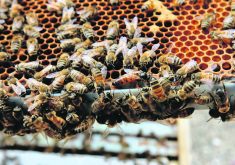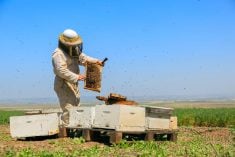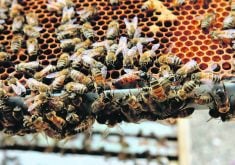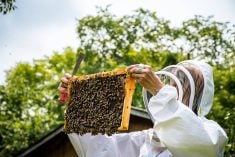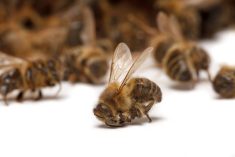Some Manitoba beekeepers have seen honey production drop this summer as hot, humid weather increased the number of hives that split due to swarms.
“It’s usually the humidity and the higher temperatures that make the bees and the hives feel hot, the same way that we do,” said Waldemar Damert, president of the Red River Apiarists. “We don’t like to be hot and humid and they don’t like that either.”
Those overheated bees cool off by hanging around outside the hives where they begin to build new cells. Before long new, young queens are being raised in those cells and the hive needs to split in two.
Read Also
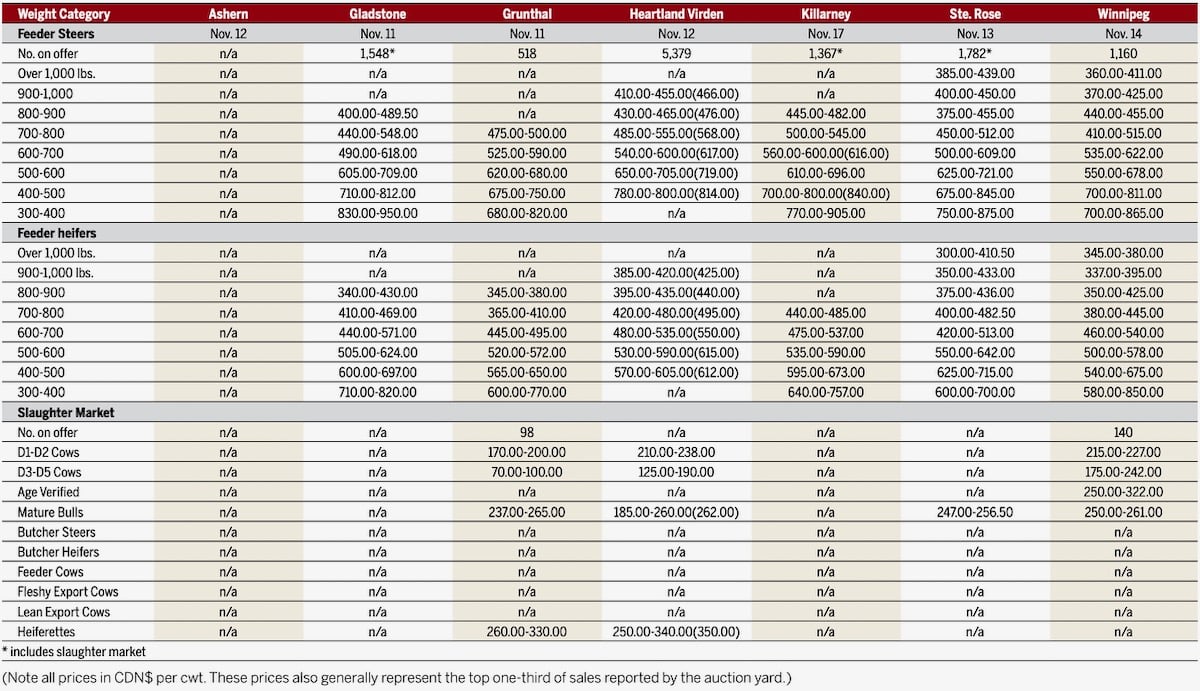
Manitoba cattle prices, Nov. 17
“It’s then the old queen flies out with the majority of the bees,” Waldemar explained. “They first swarm out and they hang around in the trees. Then they basically have bees that go and scout for places that they can move into, usually it’s a building that has a crack on the side, or a hole where they can fit in, or a small shed, or whatever they can find. So they will move into there if the beekeeper doesn’t see them in time and collect them.”
Smaller beekeepers are often able to see swarms and rehive the bees. But honey producers with larger operations and bee yards parsed out over a wide geographic area might not be able to react fast enough to recapture bees on the move.
“With several thousand hives, well if they are around in that particular yard at that particular moment they would collect the swarm, but the majority of the swarm will actually swarm out to somewhere else,” said the apiarist. “Then they are gone.”
Even if bees are captured before moving on to greener pastures, having two small colonies instead of a single strong colony will still result in much more work for the beekeeper, Damert notes, adding those colonies will also produce less honey.
“But that’s basic reproduction with honeybees, they are not out there to make a big hive, their natural reproduction method is swarming as much as they can to leave as many hives as possible around for survival,” he said.
And while the word “swarm” doesn’t always have a positive connotation, the beekeeper was quick to point out that swarming honeybees pose no risk to the public.
“They ignore you completely, even if they see you they will just fly by you completely,” he said. “They will move on and keep going to where they are moving to.”
And while cities like Winnipeg don’t currently allow urban beekeeping, Damert said that some of these swarms would have ended up in urban locations anyways. But many people have trouble telling the difference between honeybees and wasps, he added, indicating that while wasp populations have been high this year, it’s possible some people have mistaken wasps for honeybees and vice versa.
The high prevalence of swarming this summer is expected to have an impact on overall honey production in Manitoba, but it’s still too early to know exactly what that impact will be.
“Honey production overall is down, we’re probably looking at about 20 to 30 per cent less,” Damert. said. “But I would suspect that also had something to do with weather patterns.”



